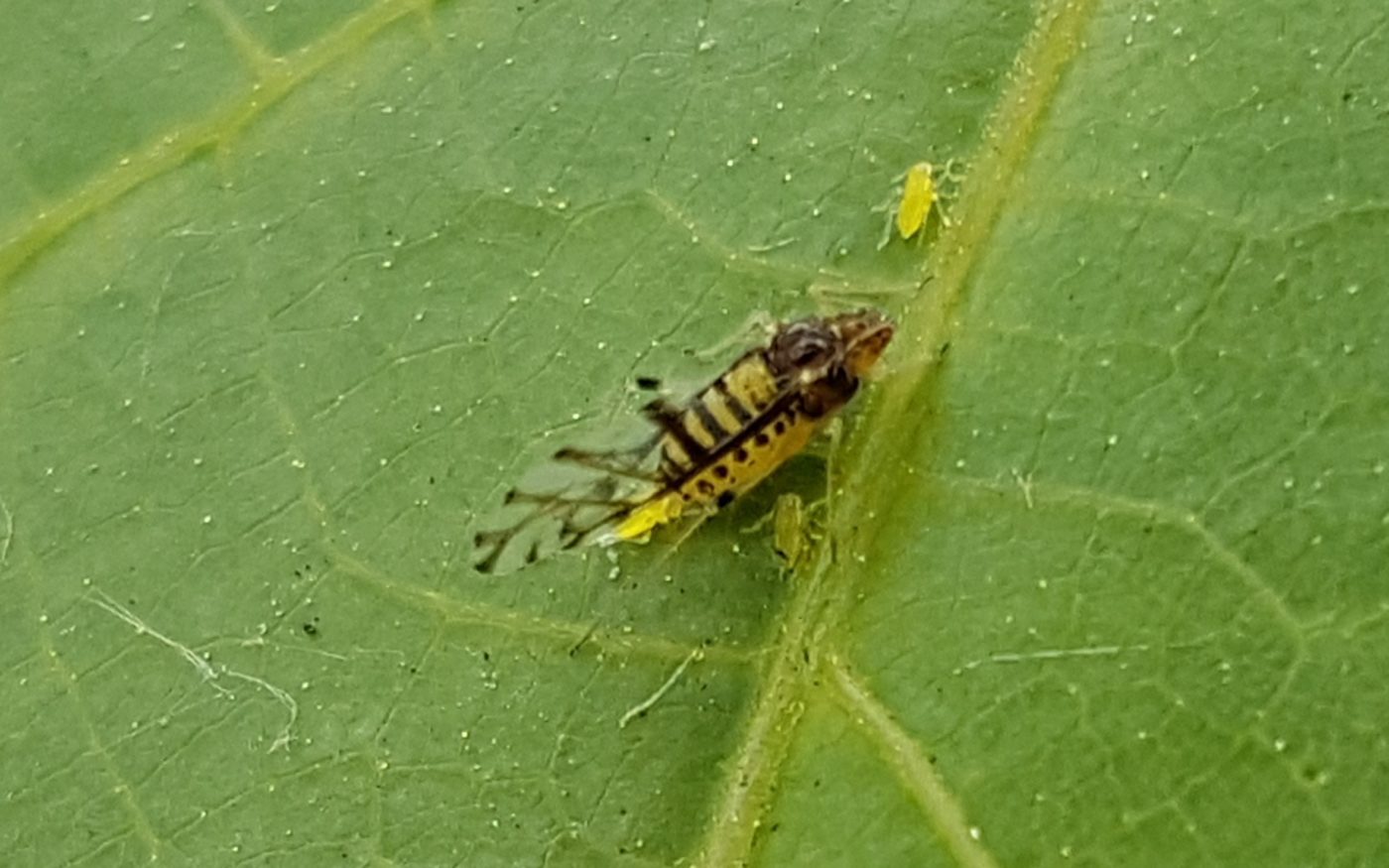Order
True bugs
Family
Aphididae
Aphids are plant feeding insects. Some aphids species feed on just one plant species, but others feed on several different plants or switch between plant species during successive lifecycle stages or annual seasons.
What do they look like?
Adult lime aphids have pale yellow green bodies of 2 to 3mm in length. They have horizontal broken dark bands across their abdomen, vertical dark stripes on their thorax and black dots on the edges of their wings. Juveniles resemble adults but are smaller with no wings, except when they first hatch they have no dark bands or stripes on their bodies. Female egg laying Common lime aphids, which appear later in the season, have bodies with dark bands across almost their whole abdomen.
Where do they live?
Common lime aphids live on lime or Linden trees (Tilia sp.).
Where can they be found?
Common lime aphids are found across Europe into North Africa and Southwest and Central Asia. They have been introduced in North America and New Zealand.
When can you see them?
You can see Common lime aphids in spring and summer.
Life cycle
In April and May, when new leaves of the lime tree are growing, eggs hatch into juveniles of the Common lime aphid, which become winged adults and reproduce without mating to give birth to live young. In mid to late summer however, winged males and non winged females are produced that then mate and produce eggs, these overwinter in crevices of lime tree bark.
What do they do?
Common lime aphids generally feed on the phloem fluid of lime trees, via leaf veins on the underside of leaves. Younger aphids will have shorter and narrower feeding tubes (styluses) and they will feed on smaller veins on the leaf.
Did you know?
Lime trees can appear to exude a sticky substance onto objects such as cars parked below them, this is from honey dew produced from aphids feeding on the lime trees.

